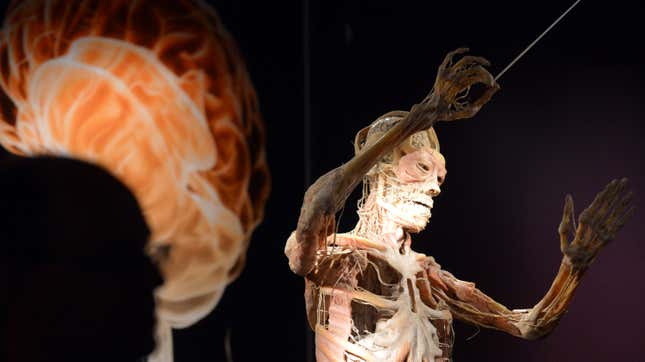
Researchers around the world are working to construct an atlas of all the different cells in the human body. A team in China has just released the results of a huge step toward that goal.
The Human Cell Atlas is an international initiative to map all of the body’s 30-trillion-plus cells, their types, and how they relate to one another. Researchers hope that this atlas will prove to be a useful resource for curing and preventing diseases. In a new study, published today in Nature, a team led by Guoji Guo at the Zhejiang University School of Medicine in Hangzhou, China determined the types of cells that comprise all of the major human organs, creating what could be the most comprehensive cell-type atlas yet.
“This is the first version of the human cell map,” Guo explained to Gizmodo in an email. “It depicts a basic scheme for the ultimate human cell atlas.”

The team collected both adult and fetal tissue samples from Han Chinese donors, processed and isolated them using a centrifuge and enzymes, and then sequenced them using a technique called Microwell-seq. The team previously developed the Microwell-seq tool in order to quickly and cheaply sequence the RNA (a way to see which segments of genetic material the cell is actually using) in hundreds of thousands of single cells.
First, the researchers load the cells into a plate with 100,000 minuscule wells. Then, they inspect the plate under a microscope to wash out any places where the wells have captured two instead of one cell. Then, they load the plate with magnetic beads with barcodes written from genetic material, that are able to capture the RNA from the cells.
This method allowed the researchers to sequence hundreds of thousands of individual cells from 60 different tissue types, which they grouped into 102 clusters. These clusters weren’t necessarily divided by the kind of organs their cells originated from, but instead the type of cell, such as endothelial cells (the kind that line the inside of blood vessels), macrophages (the kind of white blood cells that eat outside junk) and stromal cells (connective tissue). The team even uncovered new cell types not described before in both fetal and adult kidneys.
After generating the map, the team devised a method by which they could quickly classify cell types in the future. They also compared fetal to adult cells, as well as human to mouse cells. Surprisingly, they found that many of the non-immune system cells in the body were activated with markers related to immune cells, Guo told Gizmodo, suggesting a potential regulatory mechanism for immunity in the body.
Sarah Teichmann, cofounder and co-chair of the Human Cell Atlas organizing committee, told Gizmodo in an email that the new paper significantly increases what scientists know about human cells and tissues. She emphasized that this project is a global endeavor including more than 1,600 people across 70 countries. “The aim is to build an atlas of at least 10 billion cells, covering every tissue, organ, and system in the body within the next decade. This scale not only poses challenges for collecting the data, but also for storing and visualizing it.”
This is just a pilot study on a limited population size—a blank map upon which other studies can expand and fill in the details. Scientists at institutes around the world are working to contribute to the project. The hope is that the Human Cell Atlas, like the Human Genome Project before it, will teach us more about how our bodies develop, providing insights into the origins of disease.